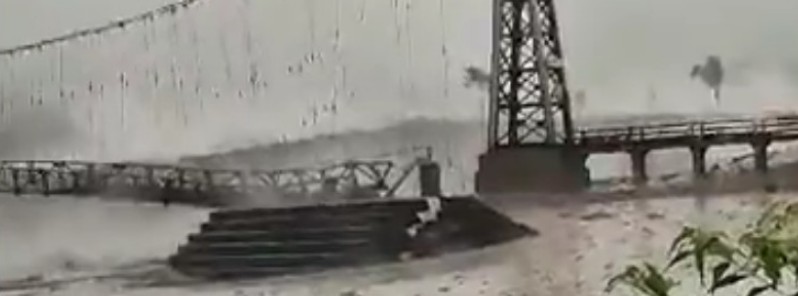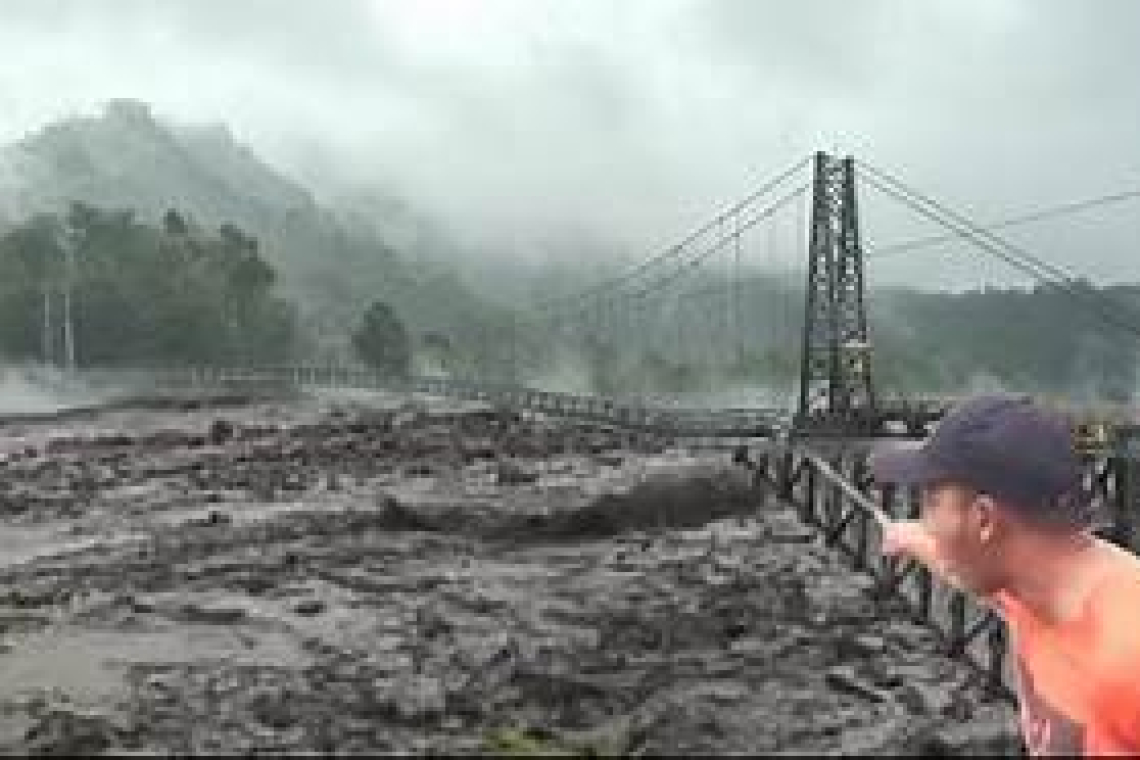10 days of continuous rainfall caused a large amount of volcanic material, debris and water to move down the slopes of the Semeru volcano on July 7, 2023, leading to destructive overflows and severe damage.
The resulting lahars, a destructive mix of water and volcanic material also known as volcanic mudflow, have led to the destruction of several bridges. Two notable casualties include the Kali Regoyo Kebondeli Selatan suspension bridge and the Regoyo Lumajang Bridge.

Jembatan gantung Kali Regoyo Kebondeli Selatan, juga putus pic.twitter.com/f6SGKMfzOc
— INFO SEMERU ? (@info_semeru) July 7, 2023
1/2
— Volcaholic ?? ?? ? (@volcaholic1) July 7, 2023
Awful! Lahar from Semeru in Lumajang this afternoon. It has also destroyed the Regoyo Lumajang Bridge ??
10 days of continuous rain and there's still no sign of it letting up ?
Via: @jalinmerapi
⬇️⬇️⬇️#Semeru #banjirlahar #lahar #gunung #volcano #Indonesia pic.twitter.com/BEtR2LUIMj
Lahar at Semeru this morning….. #Semeru #banjir #lahar #gunung #volcano #Indonesia pic.twitter.com/yRox6xX7SO
— Volcaholic ?? ?? ? (@volcaholic1) July 7, 2023
While the rainfall may cease, the aftermath of the lahars poses an ongoing concern for the local communities and the authorities alike. Infrastructure damage, particularly the loss of bridges, disrupts transportation and can isolate communities, impeding rescue and recovery efforts.


